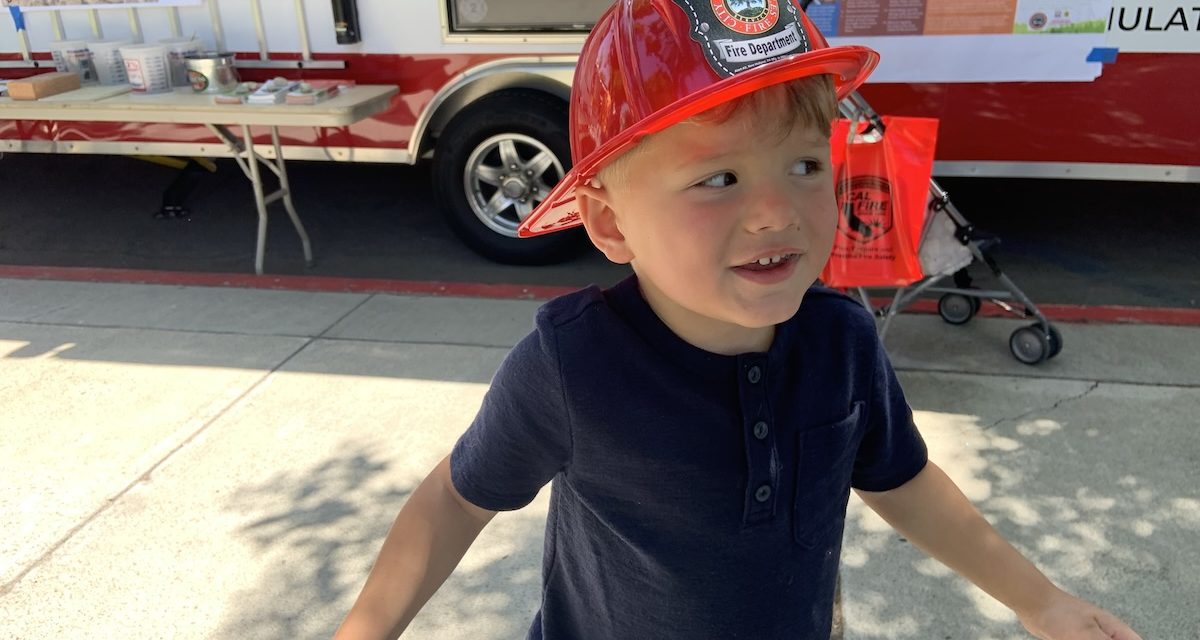By Elisa Huot
Former educator, toddler parent, and Paso Robles resident
Summer is a time for keeping cool and having fun. Whether it’s a day at the water park or a backyard swim party, we all enjoy relaxing poolside during these hot months, but letting ourselves get too comfortable may turn good times into tragedy. Drowning is a leading cause of death for children in California. Even a few inches of water can be dangerous for a young child. Drowning occurs quickly and quietly. Especially when swimming with multiple kids, attention from adults becomes split and distractions happen easily.
John Prickett, fire captain and paramedic for the City of Paso Robles oversees the Community Risk Reduction Division. He emphasized that children swimming unsupervised is very dangerous and that a supervising adult who can swim should always be present. “Having a buddy system is a must when around a pool, especially with children, and be sure to have deterrents around pools and spas such as fencing to prevent drownings,” said Prickett. “It only takes a couple of seconds to lose track of someone that has gone underwater — that’s when trouble can arise.”
Prickett stresses having a life ring and pool hook around the pool are great tools to aid someone in distress. Also, learning CPR is crucial to helping someone who has drowned.
Even when lifeguards are present, adults need to remain vigilant. “Parents know their children best,” said Victoria Teeter, aquatics coordinator for the City of Paso Robles. “Lifeguards are there to prevent drownings but it should be a partnership with parents/caregivers.” Oftentimes, parents settle into an unsafe level of comfort when little ones are wearing life jackets or floaties.
“The big push in aquatics is having a personal flotation device (PFD) with a vest that is approved by the U.S. Coast Guard,” said Teeter. “Some flotation devices can flip a child face-first and inflatable arm floaties can pop.”
Aquatics staff are available during the public swim sessions to check your child’s flotation device if you are unsure. Teeter recommends checking for the approved U.S. Coast Guard stamp on your child’s PFD which provides important information about the intended use for the life jacket, the size, and the approval number.
Teaching your child to swim is an important life skill that should be introduced early. According to Teeter, combining group swim lessons with individual lessons, and modeling safe behavior is the most effective approach. The city’s Recreation Services team has added private swim lessons to the normal lineup of classes this summer in addition to a primary skills level for kids ages 7-12 years. Teeter also suggests practicing what your child learns in their lessons at home by having them blow bubbles underwater in the bath, lay their head back with ears in the water, and do kicks from the hip. Children learn by watching the adults in their lives. Practice water safety yourself and set a good example for your kids. Talk to your kids about the dangers of water and how to stay safe.
Visibility underwater is another key factor in water safety. Swimsuits with bright, contrasting neon colors are more easily seen when a child is swimming. A study conducted by Alive Solutions found that bright orange, yellow, and lime green are most visible in a pool or open water, while blue and white are the most difficult to see.
Lastly, remember to take breaks. Even the best swimmers can become fatigued. Dehydration can increase the risk of drowning. Use those breaks to drink water. Children often remove their life vests while taking a water or bathroom break and forget to put them back on. Create a checklist with your kids that they can use anytime they enter the water to reinforce water safety.
Clark’s Water Safety Checklist
- Do I have my life vest? Check!
- Do I have my sunscreen? Check!
- Do I have an adult? High five!
PASO ROBLES PRESS MAGAZINE
Copies of Paso Robles Press Magazine are directly delivered to 23,000 readers in zip codes 93446, 93451, and 93465 and 2,000 dropped with support from advertisers and subscribers. Together, we are Making Communities Better Through Print.™
To subscribe or advertise, click here.














